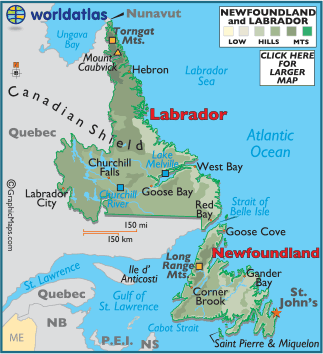This piece was first written to address pressure which affect fishing, aside from those leveled by significant others who watch chores go undone and front lawns turn to hay fields because the bluefish bite was hot.
Then along came Sean Ward.
Sean writes a fishing blog across the pond and he has articulately expanded on the significance of barometric pressure. Take a few minutes to read his words; his knowledge is complete and you’ll surely expand your own knowledge of weather and how to catch more fish or perhaps more importantly, when to stay home because you know fish are sheltering, not feeding. Having a new voice and level of perspective on something as important as understanding weather is critical for all of us to become better anglers. You can read Sean’s piece here. Then you can cruise around his site to learn even more. Perspective is everything, right? Right.
The original Fish Wrap piece follows…
Hurricane season means months of seaside homeowner angst, beaches wiped clean, low pressure and high surf but what does all that mean for fishing?
Why do some guys fish hard in the days leading up to storms and why does it seem a big Fall blow can shut fishing down for the season?
Fishing can be complicated on its own; hurricanes, tropical storms, depressions and cyclones only muddy the waters.
That animals sense a storm’s approach or barometric dives has long been understood.

Pliny the Elder
Roman author Pliny the Elder, (AD 23-79), wrote, “It is said that (sea-urchins) can forecast a rough sea and that they take the precaution of clutching stones and steadying their mobility by the weight (and) when sailors see them doing this they they at once secure their vessels with more anchors.”
In Newfoundland, Placentia Bay fishermen knew, “There is bad weather ahead if starfish are found to be grasping or holding onto stones when they are pulled on trawl hooks.” Any local fisherman worth his salt knows codfish will swallow small smooth rocks to gain stabilizing weight. A collection of Newfoundland fishermen observations in 1794 noted that, “A codd has been haul’d in and when open’d a Stone has been found in him a pound in weight and sometimes more. Whenever this is the case it is a sure indication of an approaching storm as the Fish swallow the Stone for Ballast to enable them to better encounter the jarring elements.” Dylan was right about knowing which way the wind blows.
So how do fish know? Research with rainbow trout at The University of New York and the University of Florida points to a complex, amazingly specific design of sensors along the lateral line to detect a variety of indicators, from changes in barometric pressure to movements of other fishes. Their research, “viewed the lateral line as a “hydrodynamic antenna” that is configured to retrieve flow signals and also suggest a physical explanation for the nearly universal sensory layout across diverse species.”
Regardless of geography, those sensors help fish sense danger, warning them from hanging around Hazard Rock to see the surf up close or from Camp Cronin in a 40 mile per hour breeze because the scup bite was hot.
And they don’t need a rescue swimmer when things go sideways.
Swells can be destructive. According to Brian McNoldy of The Rosenstiel School of Marine and Atmospheric Science The Rosenstiel School of Marine and Atmospheric Science, “strong currents and turbulence have been known to exist up to a week after the storm passes overhead. Damaging currents can extend down to at least 300 feet below the surface, capable of dismantling coral reefs, relocating shipwrecks, breaking oil pipelines, and displacing huge volumes of sand on the seabed.”
As freshwater is lighter than salt and floats like a lens, excessive storm rainfall can flood estuaries which might keep stripers from feeding. That lens can also reduce available oxygen, causing fish stress. Stress kills. The opposite can be true if storm surges push seawater up freshwater rivers. Nature has wonderfully accounted for such events with estuaries acting as sponges and barriers, which work well if not filled for development or fertilized for swaths of precious green lawns.
Stripers love washes of oxygen-rich shorelines where bait flounder amongst rocks but what happens when the column chokes with weed, detritus and bottom materials? Waters heavily mixed with fine sands will affect gill plates, logically driving fish out to better stratified waters offshore.

Zostera grass. picture courtesy of Northern Bushcraft
Beds of eel grass can be torn away, leaving less habitat for small fishes. Favored feeding areas can be covered over with silt. In the early days of Hurricane Maria’s swells, Elisa at Snug Harbor Marina noted that striper fishing had slowed and fluke fishing had shut down. No structure, no bait, no predators.
As for freshwater fishing, the effects appear to be similar.
Tim Moore, New Hampshire fishing guide, producer and host of Tim Moore Outdoors TV told me, “Post front and early storm fishing are generally very good times to fish our lakes and ponds. Feeding activity will increase for a time. Long periods of low pressure will generally shut the fishing off. Once a storm sets in, freshwater runoff usually creates large deposits of silt that will cause fish to stop feeding and generally associate with structure or other cover, such as weed beds.” Fresh and saltwater have much in common.
The 1904 Newfoundland’s Daily News, with a touch of Fish Wrap-style sarcasm, recorded a comment, “Shure your Lordship with all your learnin’ ought to know that a salmon TAKES ON BALLAST, the sensible craythures when a gale is risin’.”
That gale might wipe a beach clean or flood a salt pond but first, Nature gives fishermen an opportunity.
Southern gentleman and longtime panhandle kayak fisherman Jerry McBride told me, “Conventional wisdom around Florida is that fishing always picks up prior to a storm as the barometer drops. I liked catching some of my biggest spotted sea trout and snook when the water was stirred up and choppy. The big fish seemed to be less wary.”
Given how opportunistic stripers are, all that dreadful wind and rain might just help the bite if it doesn’t come too late in the season.






0 Comments